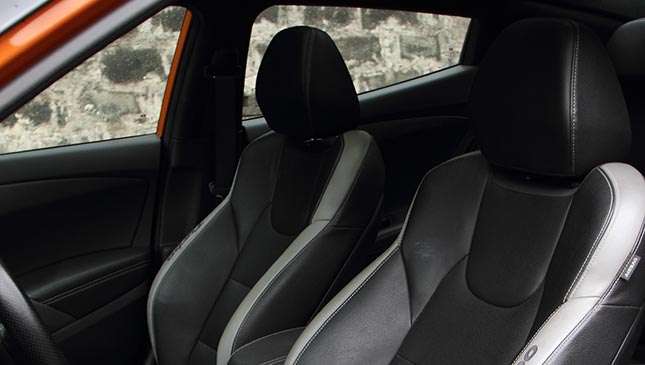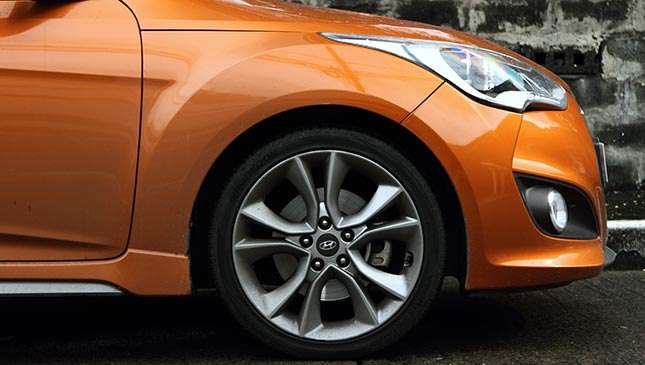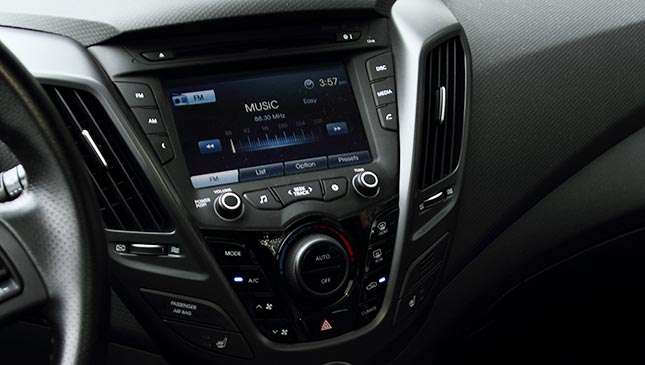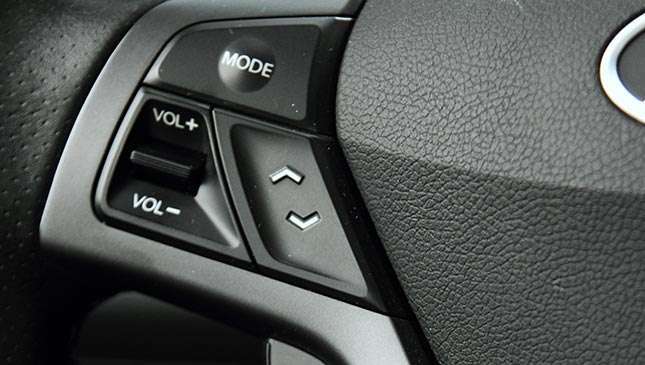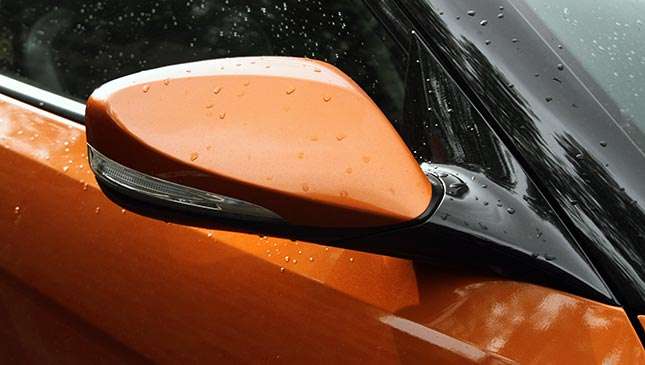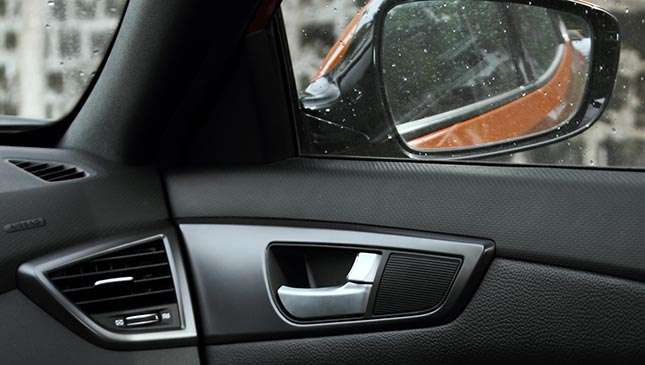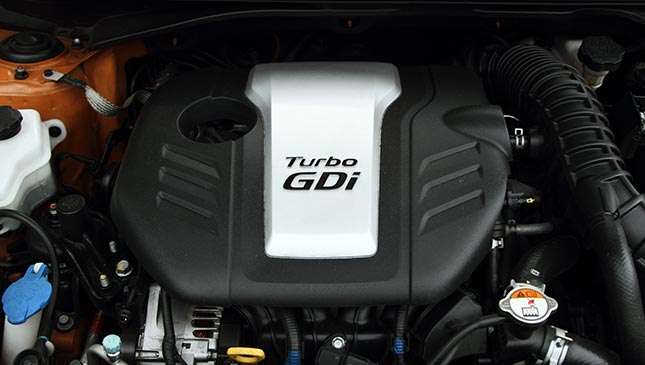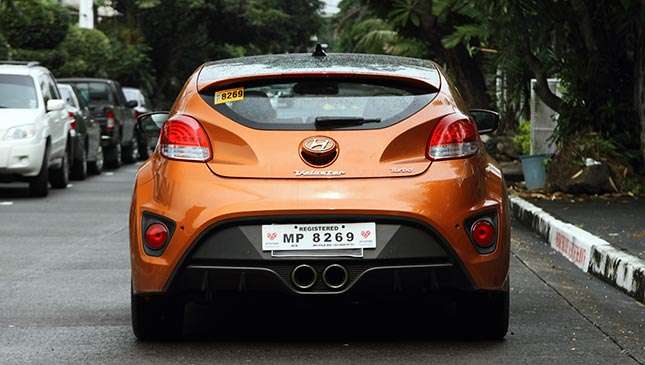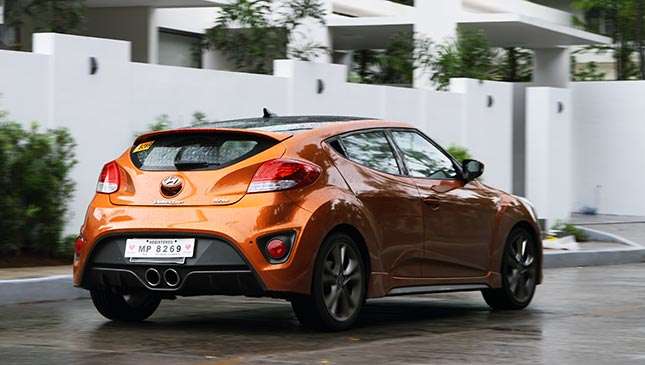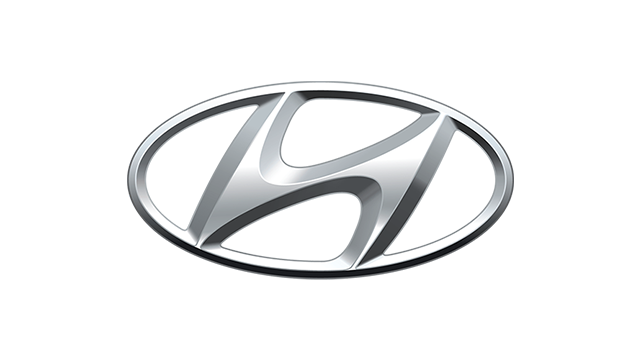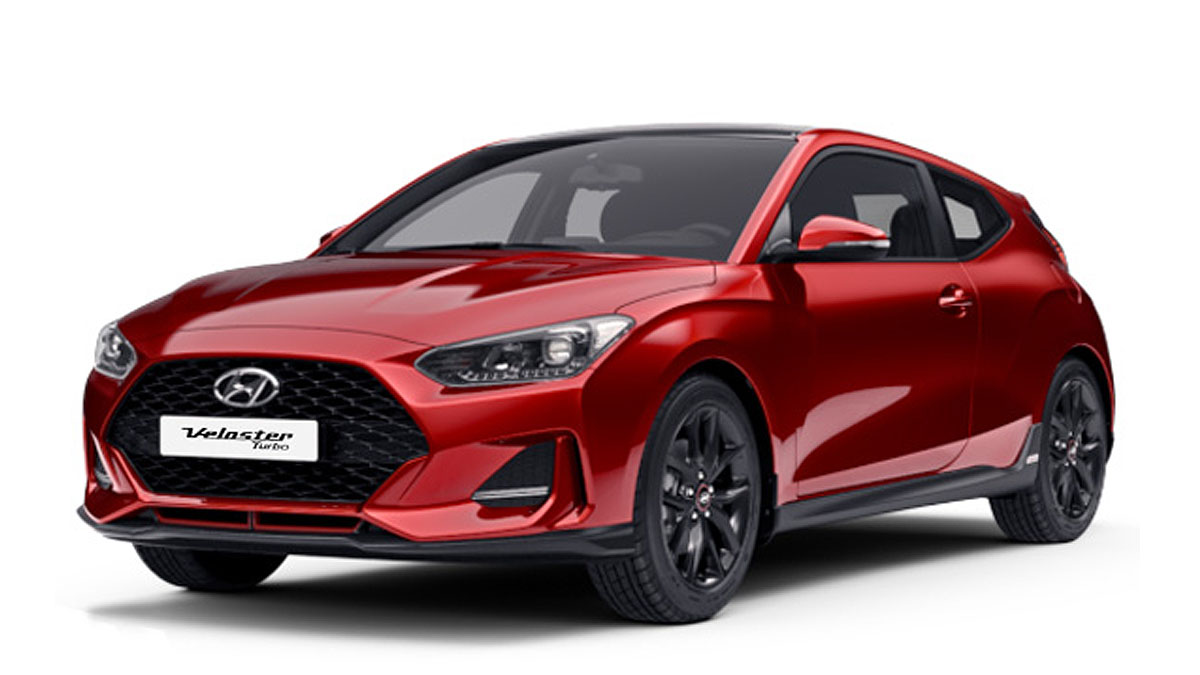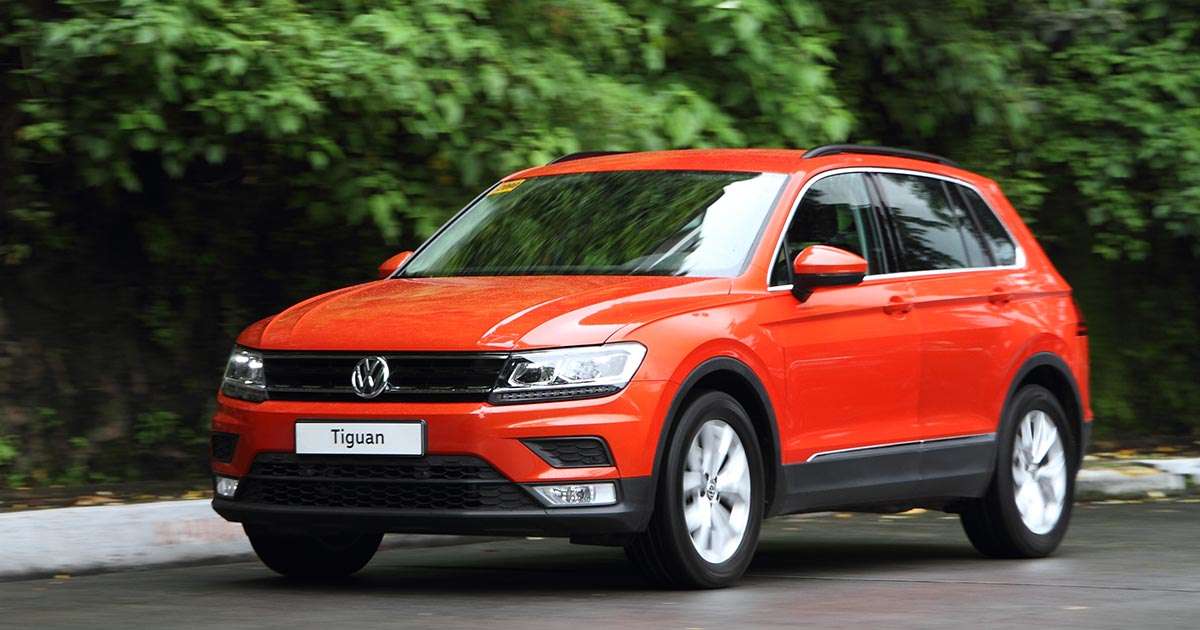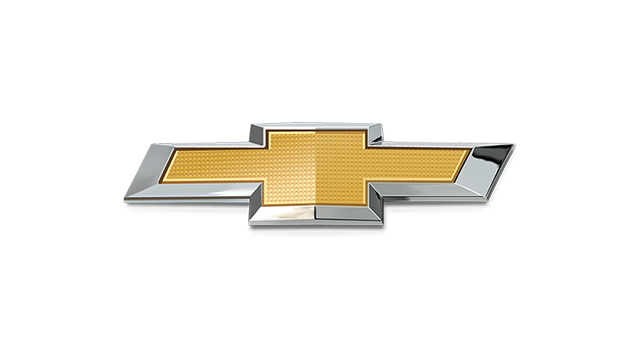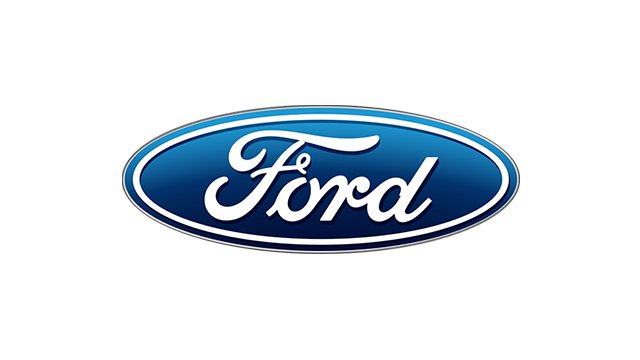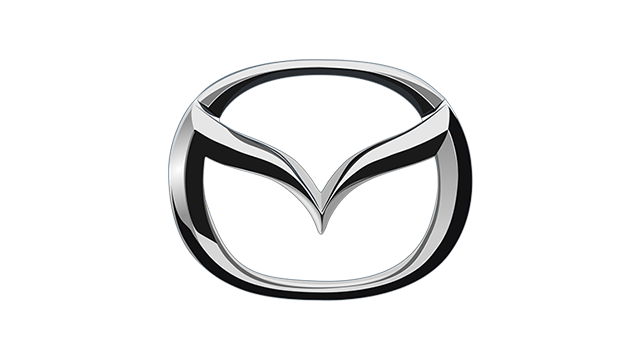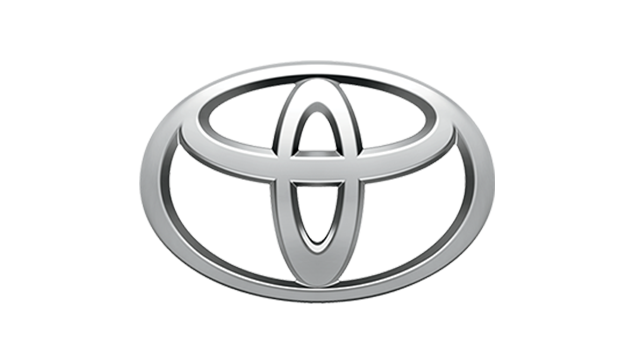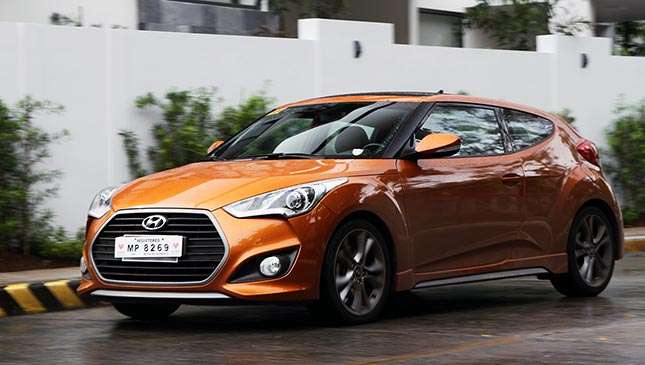
Think Different—so went one memorable ad. That was for a computer, but the same could easily apply to cars, particularly sporty ones. Hyundai certainly had ‘different’ in mind when it created the Veloster. It’s a mash-up of several different automotive genres: sedan, coupe, hatchback—heck, Hyundai even calls it a crossover utility vehicle. Does this way of thinking result in car that is a jack of all trades but master of none, or will the amalgam yield something magical?
The Veloster certainly looks distinctive. The front has the rakish looks of a sports coupe, with triangular headlamps stretched far back into the fenders. Hyundai’s current corporate grille, the large hexagon, takes up nearly all of the fascia, a huge black maw framed in a neat matte-gray frame. A matching gray spoiler lip peeks out from under the bumper’s corner flares. LEDs make up the daytime running lights, while round projectors also house very bright LED units. Blacked-out A-pillars contribute to a floating-roof effect.
The shape becomes even more interesting as you sweep along the side. The roofline drops sharply as it rakes toward the hatchback rear. The front may be easily identifiable as a sporty Hyundai, but the back end is something that defies convention. Big taillights and a scalloped tailgate frame a tiny glass backlight. Dual exhausts are mounted in the center, and the round foglamps are on the lower corners. It’s as if the designers have decided to throw in all their ideas at once.
And it somehow comes together neatly. Looking more like an oddball concept car or a futuristic space shuttle, the Veloster is the furthest, in terms of appearance, from a conventional crossover. We’re not sure if we’ll tire of this look a month or a year from now, but right now it looks intriguingly attractive, and a welcome sight in our parking space for the few weeks of this long-term test.

Inside, it’s a bit more conventional, with the typical setup seen in its maker’s sedans and SUVs. Pegging it as a Hyundai are the trapezoidal shapes for the air vents and switch clusters, and the bright blue backlight for the buttons and instruments. Attempting to spice up the cabin are the big silver door pulls, which jut out prominently. It’s interesting, but ultimately poorly executed, because you have to contort your hand to grip it properly. The parts are made of plastic, which results in a cheap-sounding squeak as you grip the equally cheap-feeling handle. The seats are well-bolstered buckets that offer proper side and back support. They’re partly motorized as well, something especially welcome at this price point.
A keyless system is standard, allowing for easy entry and engine startup. When you push the starter button—easily located on the center of the instrument panel—the 1.6-liter gasoline fires up with a muted whir, not sounding particularly sporty. It’s turbocharged, so it produces a fair amount of power for its size: 201hp and 264Nm.
The modest displacement delivers modest acceleration, until the turbo kicks in. Do note that there’s turbo lag here; things finally become interesting above 3,000rpm. There’s a conventional automatic gearshift, but it doesn’t control the usual torque-converter planetary automatic transmission. Instead, the Veloster gets a seven-speed dual-clutch gearbox. The advantages, at least on paper, are numerous: quick, nearly seamless shifts; no interruption in power delivery; improved reliability and fuel efficiency. Does it work as promised?
Bad news first: The dual-clutch is frustratingly slow when moving from a standstill. There’s a second or so of delay between stepping on the accelerator and actually moving forward. And the movement comes with a slight jerk as the mechanism engages. It’s a common weakness of the dual-clutch design, particularly in the first generation of this type of transmission.
To be fair, it probably takes no more time than a cautious driver would to engage the clutch of a manual transmission. Passengers won’t feel anything amiss at all, so it boils down to the driver not getting that instant motion. The delay is particularly annoying when starting up a ramp from standstill, and vexing when maneuvering the Veloster through the cut and thrust of merciless Manila traffic.
The good news is that the once the car is moving, the changing of gears is, as advertised, quick and nearly seamless. Power delivery is almost uninterrupted, too. Hyundai has developed—and is producing—the transmission in-house, so we have high hopes that succeeding generations (or maybe just a software update) will improve that first-gear takeoff.
Once you’re on the go, the Veloster’s handling behavior is that of a conventional compact sedan. The ride is firm, a constant reminder of the low-profile tires mounted on the 18in alloys, but it manages to avoid becoming uncomfortably harsh. The assist level of the electric power steering can be adjusted via a button on the steering wheel itself. We keep it on the lightest Comfort setting nearly all the time; this seems best suited to the car’s easy-going driving nature. Despite its aggressive exterior, the Veloster never really displays the driving dynamics of a sporty coupe, much less a pure sports car.
What of its role as a ‘crossover utility vehicle,’ as Hyundai puts it? It’s not tall at all, so don’t expect it to confidently go through floodwaters or rumble along on dirt roads. The seating position is about the same as a sedan’s—neither low to the ground like a sports car, nor tall enough to give a commanding view of the road.
One of the Veloster’s unique design choices—an asymmetrical layout, with a single door on the driver side, but with a rear door on the passenger side—pays off when carrying more than one passenger. The hidden door keeps the coupe styling more or less intact, and at the same time provides more convenience than having a rear occupant squeeze through a small opening or a rear-hinged door. Surprisingly, the ‘utility’ part of the description has some merit. The bulbous hatchback means that large boxes can easily fit in the trunk. We have some fond memories of stuffing a rental Veloster in America with a whole bunch of packages. With the rear seat folded, it can swallow luggage like a a small crossover.
We find the Veloster to be a pleasant companion, aside from its reluctant dual-clutch gearbox. It’s more versatile than the usual sports car, taking in four passengers and a fair amount of cargo through its four doors. But if we wanted a utility vehicle, we would get a crossover—maybe the Tucson. If we wanted a thrilling drive, we would get a pure sports car—there are several excellent and inexpensive ones right now, including Hyundai’s own Genesis Coupe. The Veloster is interesting and unique, but its drivetrain and chassis don’t quite deliver the excitement promised by its striking design.
SPECS: Hyundai Veloster GDI Turbo
Price: P1,608,000
Engine: 1.6-liter turbopetrol I4
Power: 201hp @ 6,000rpm
Torque: 264Nm @ 1,750-4,5000rpm
Transmission: 7-speed dual-clutch
Layout: FWD
Seating: 4
Score: 15/20

